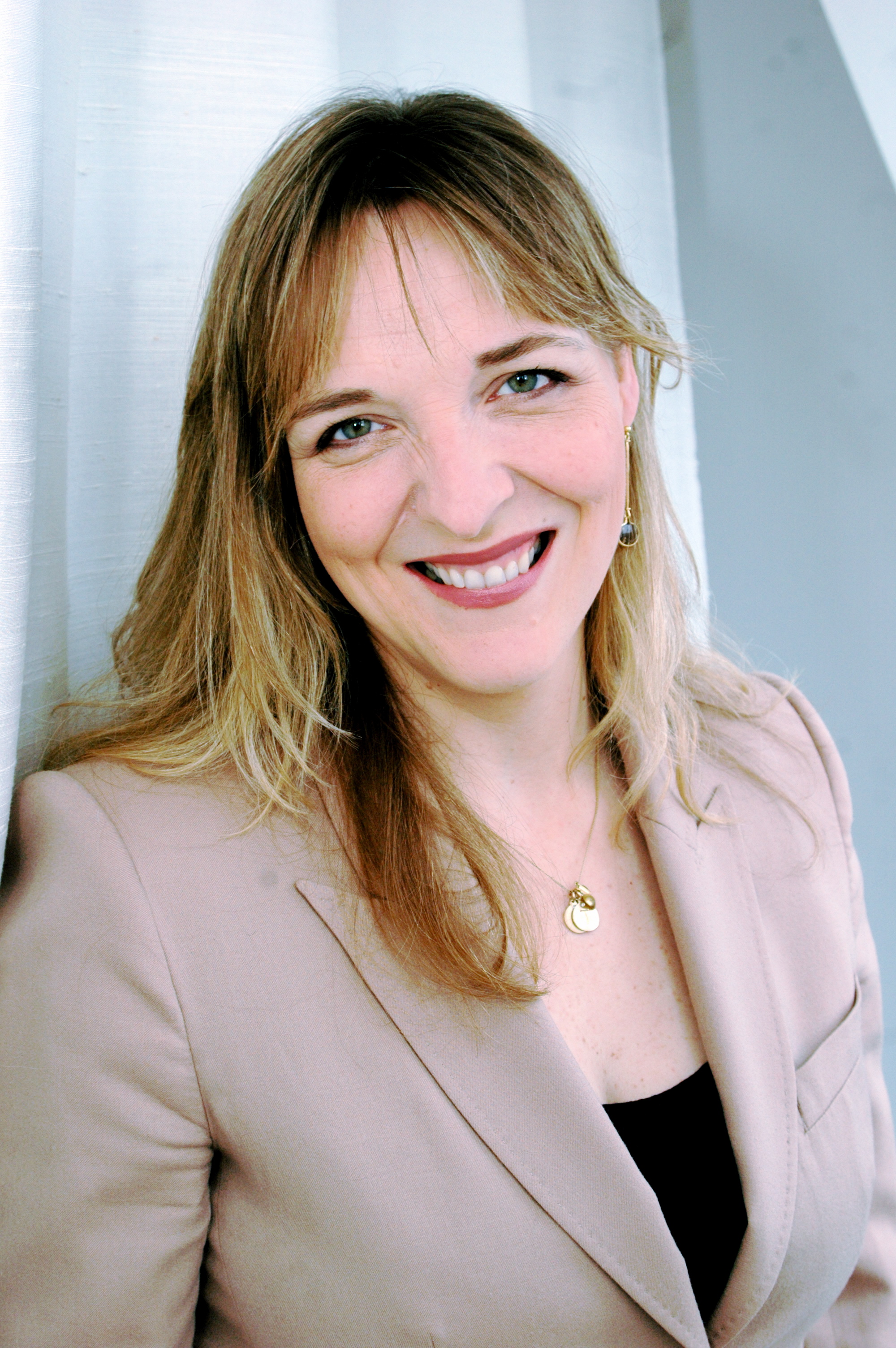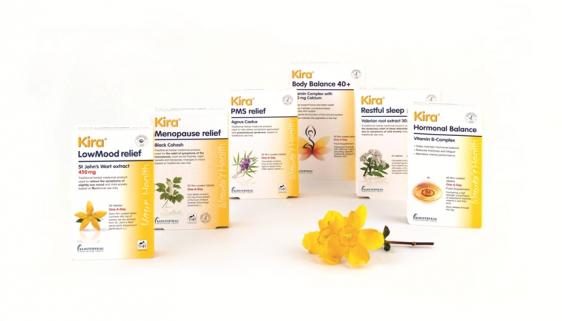Two out of five women who have gone through the menopause admit they were not prepared for the hormonal upheaval that comes with the change of life, and only one in four women aged 40 to 60 is confident she knows enough about the way hormones affect her daily life.
Although this milestone is a health challenge every woman will face, for many women menopause remains shrouded in mystery according to new research from Kira the women’s supplement specialists, has revealed. The research which surveyed 1,000 women found that one in five (21%) respondents said they did not understand the change of life. Perhaps not surprisingly, uncertainty is more common among women aged 20 to 40, with a third (32%) admitting they are not confident they understand the menopause.
But shockingly, almost one in ten (9%) of women in the age range where they are likely to be experiencing some symptoms, or may already have stopped menstruating, admit they are not sure what the menopause is.
Of those who had already gone through menopause, almost half (47%) felt they were not properly informed. One in four (25%) admitted they were not prepared and almost one in five (18%) did not seek advice on the health implications and symptom control.
The implications of these insights are alarming as the hormonal changes associated with menopause can have a huge impact on health and emotional wellbeing.
On average, women in the UK reach menopause — which is defined as a year without a period— at the age of 51. As levels of the hormone oestrogen fall, it triggers a range of symptoms including hot flushes, night sweats, heart palpitations, headaches, disturbed sleep, headaches, mood swings, depression, loss of libido, vaginal dryness and urinary tract infections.
 But there are also unseen changes. Dr Catherine Hood a women’s health specialist and an advisor to Kira says: “The incidence of coronary heart disease — which is Britain’s biggest killer — rises dramatically after menopause. This is because oestrogen raises beneficial HDL cholesterol, lowers unhealthy LDL cholesterol, and improves heart and vascular function, so as oestrogen falls after menopause women lose all those heart-healthy benefits.
But there are also unseen changes. Dr Catherine Hood a women’s health specialist and an advisor to Kira says: “The incidence of coronary heart disease — which is Britain’s biggest killer — rises dramatically after menopause. This is because oestrogen raises beneficial HDL cholesterol, lowers unhealthy LDL cholesterol, and improves heart and vascular function, so as oestrogen falls after menopause women lose all those heart-healthy benefits.
“Bone density also falls, which increases the risk of osteoporosis and fractures. One in two women over the age of 50 will break a bone. Worse still, of the 70,000 osteoporotic hip fractures each year, about 30% of patients will die within a year due to causes related to the fracture.
Dr Catherine Hood adds: “The lack of awareness surrounding menopause which this research has uncovered is very worrying. Ignorance is not bliss, it is being blind to the health challenges which come with the menopause. It also means women are blind to the positive steps they can take to bolster their health and relieve troublesome symptoms.”
“You don’t always have to resort to Hormone Replacement Therapy, and some women should not as there are times it can actually increase the risk of heart disease.
“If you prefer a more natural approach, there are supplements and herbal remedies which have been shown to support health and wellbeing and counter common problems such as hot flushes, night sweats and sleep disruption.”
Kira, one of the most trusted names in women’s’ supplements, has developed a range of products which support health and wellbeing during this time of change.
Kira’s traditional herbal products are fully accredited and carry the Traditional Herbal Registration (THR) logo — which ensures they are made to the same exacting standards expected of pharmaceutical medicines. THR accreditation guarantees you receive the same dose every time and the remedy is free from any harmful additives.
Dr Catherine Hood in summary notes: “A healthy diet and plenty of exercise can also make menopause more manageable, but busy lifestyles mean a little extra help from a supplement or herbal remedy is often beneficial.
“Many of my patients say they find herbal remedies helpful, however the quality of these products can vary dramatically, so I would strongly advise against buying any herbal product that does not carry the THR logo.”
Menopause marvels from Kira…
Kira Menopause relief (this product falls under the traditional herbal registration).
Every Kira Menopause relief tablet contains a consistent, standardised 6.5mg extract of Black cohosh (cimicifuga racemosa l), which is the equivalent of up to 55mg of dried root. A member of the buttercup family, black cohosh is also known as squawroot because Native Americans used the dried roots and underground stems, known as rhizomes, to relieve hot flushes, night sweats and other symptoms of menopause.
A 12-week double-blind placebo-controlled trial of 304 women with menopausal symptoms found black cohosh relieved symptoms more effectively than placebo. A smaller study, also double-blinded with a placebo control, found that black cohosh was as effective as HRT at controlling hot flushes and other menopause symptoms.
You should not take Kira Menopause relief if you are:
- suffering from liver or kidney disease (e.g. hepatitis, jaundice or cirrhosis) or if you have suffered such problems in the past.
- suffering or have previously suffered from an oestrogen-dependent tumour
- are of child-bearing age and not using contraception
- are lactose-intolerant
- are pregnant or breastfeeding
- are allergic to any of the ingredients.
- Under the age of 18 years
Kira menopause relief is available from Holland & Barrett RRP £10.20
Kira Body Balance 40+
A vitamin complex designed to support bone health in women aged 40 plus. High-strength calcium (850mg), fluoride and vitamins D3 and K1 help support bone health and teeth. Research has shown that calcium supplements reduce bone loss associated with advancing age and when vitamin D is taken with calcium it appears to reduce the risk of fractures by as much as 43%. Vitamins B6, B12 and folic acid help reduce tiredness and fatigue and support the immune system, while copper helps maintain connective tissue which keeps skin supple and helps maintain the pigments in the hair.
Kira Body Balance 40+ is available from Boots RRP £15.39
Kira Restful sleep (this product falls under the traditional herbal registration).
As many as three out of five post-menopausal women report problems with insomnia while symptoms such as hot flushes can undermine sleep quality. The root of Valeriana officinalis L has traditionally been used for the temporary relief of sleep disturbances due to symptoms of mild anxiety. Meta-analysis, a super study which combined the findings of 18 randomized controlled trials, found these “suggest valerian would be effective for a subjective improvement of insomnia”.
Each Kira Restful sleep tablet contains 300mg of the dried extract of valerian root (valeriana officinalis L.) — the equivalent of up to 1,800mg of the herb.
Do not take this remedy if:
- You are pregnant or breastfeeding
- You are allergic (hypersensitive) to any of the ingredients (see section 6)
- You are under 18 years of age
- You are already taking a medicine which makes you feel drowsy
Kira Restful Sleep is available from Boots & Waitrose RRP £6.99





